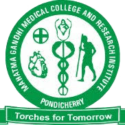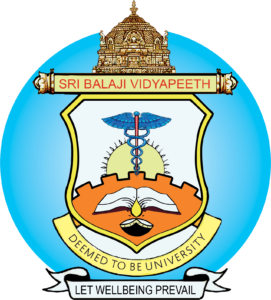Urology





Services
Patient Care
The range of our services include
- Laser in Urology
- Laparoscopic Urology
- State-of-the-art Endourological procedures
- Non-invasive management of Urinary Stones
- Reconstructive Urology
- Uro-oncology
- Uro-gynaecology
- Andrology
- Paediatric Urology
Laser in Urology
We were the first institute in Pondicherry to acquire a Holmium laser and are using it for urological stone diseases, internal urethrotomy, bladder tumor fulgurations, Posterior Urethral Valve fulgurations etc.,
Laparoscopic Urology
We were also the first institute to acquire the state-of-the-art in imaging by having the first HD imaging system. We offer a wide range of minimally invasive surgeries such as
- Laparoscopic Adrenalectomy
- Laparoscopic Nephrectomy
- Laparoscopic Orchidopexy
- Laparoscopic Cyst Deroofing
- Laparoscopic Pyeloplasty
Endourological procedures
Trans-Urethral Resection of Prostate (TURP)
The first to acquire a saline TURP system using bipolar current, a leap forward in the management of Benign Prostatic Enlargement (BPE). The first to perform laser prostate ablations and offer same for BPE in and around Pondicherry and Cuddalore
Trans-Rectal Ultrasound (TRUS)
The state of the art Siemens X300PE Transrectal US-guided biopsy is less invasive and less morbid than the other older machines providing Trans-Perineal US-guided prostate biopsy that mandates a regional or at least an injectable local anesthesia, both of which are avoided with a pure Transrectal US-guided biopsy
Percutaneous Nephrolithotomy (PNL)
We perform a large number of PNLs and patients come from far and wide for this service. This is a special area of excellence for the department and we manage all kinds of renal calculi including complex staghorn and pediatric renal calculi, doing almost a hundred cases every year
- Ureteroscopic lithotripsy for stone disease
- Retrograde Intra-renal Surgeries with Holmium Laser
- Trans-Urethral Resection of the Bladder Tumor (TURBT)
- Endoscopic Urethrotomy for strictures
Non-invasive management of Urinary Stones
Extra-Corporeal Shock Wave Lithotripsy (ESWL)
State-of-the-art imported German Siemens Extra-Corporeal Shock Wave Lithotripsy (ESWL) machine with C-ARM (X-Ray) and ultrasound localization (for radiolucent stones) guidance.
This latest state of the art ESWL system for non-invasive treatment of renal and ureteric stones helps us achieve a stone clearance rate in excess of 95% with least morbidity.
Reconstructive Urology
We perform surgeries like Pyeloplasty, Urethroplasty, Hypospadias repair, Neobladder, Ureteric Reconstruction in both adults and paediatrics.
Uro-oncology
Surgical management of malignancies related to urogenital tract, adrenal tumors.
Uro-gynaecology
We do bladder suspension surgeries for managing female incontinence.
Andrology
Consultancy for male sexual inadequacy and infertility.
Paediatric Urology
Procedures performed include pyeloplasty, hypospadias repair, circumcisions posterior urethral valve fulgration and urinary stone management.
Uroradiology
Intravenous urogram (IVU) – an intravenous contrast (like a dye or coloring that shows up on x-rays) is injected into the patient’s arm. This then goes into the blood and out through the kidneys. So when an x-ray is taken the “contrast” shows up the shape of the kidneys, ureter, and bladder (the ureter connects the kidneys to the bladder).
Micturating cystograms (MCU)– a catheter is put in through the urethra into the bladder. The contrast (like in the IVU) is put in through the catheter (the urethra is the tube from the outside to the bladder – we pass water (pee) through the urethra). Then the patient has to pass urine (pee) and x-ray pictures of the bladder and urethra are taken during this.
Ultrasound (USG) – special pictures of the kidney and bladder can be taken without using x-ray. Different information can be seen. USG, ultrasonography, uses sound waves to do this.
Computerized tomography (CT Scan) – x-rays show the kidneys and bladder in detail.
Magnetic resonance images (MRI) – special pictures show details of the kidney and bladder
Urine Flow Rate: Another useful test looks at how fast the urine is passed – the urine flow rate or uroflowmetry. Patients go to counter 240 with the receipt of payment and will get an appointment date and time and instructions. This test is done both in 240 and in the lithotripsy suite next to U ward. Patients need to pass at least 200 ml of urine for the test to give good results. So sometimes this test may have to be done again.
Post Void Residual (PVR): This looks at how well the bladder empties. No injections or catheters are needed. The patient passes urine – the technical word is “voids”. Then an ultrasound of the bladder is done and this can measure how much urine/water is left in the bladder after passing urine (voiding).
Extracorporeal Shock wave lithotripsy (ESWL): Stones can form in the kidney. Small ones often pass on their own, in the urine. Larger ones need treatment. Shock wave lithotripsy uses “shock waves” like vibrations to break up the stone, then the smaller pieces pass in the urine. This can be done with the machine outside the body (non-invasive) and can help to avoid an operation.
Urodynamics looks at how the bladder fills and the pressures inside the bladder.
Cystoscopy: This looks inside the bladder with an endoscope. This is a small tube with a small camera that is put into the bladder through the urethra (like putting in a catheter). The bladder and urethra can then be checked for problems.


